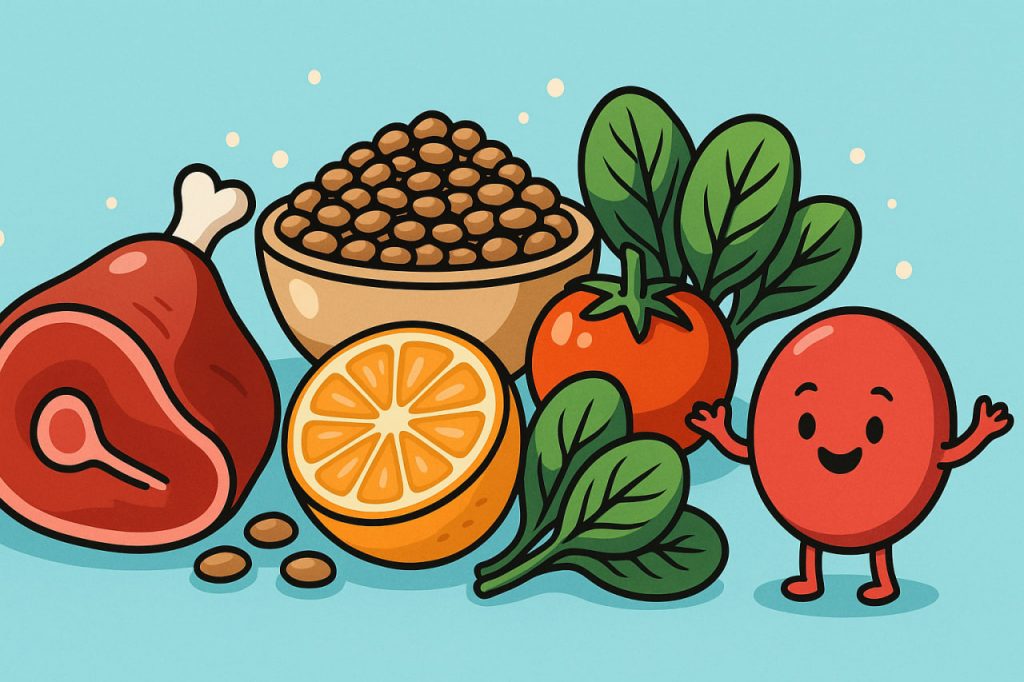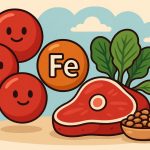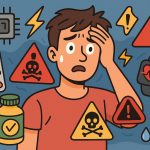Iron is an essential mineral that supports oxygen transport, energy production, and immune function. Keeping iron levels balanced is important, as both deficiency and excess can harm health. The key is to combine proper nutrition, healthy lifestyle habits, and regular monitoring.
Eat Iron-Rich Foods
A varied diet is the best way to maintain iron levels:
- Heme iron sources: red meat, poultry, and fish – absorbed more efficiently.
- Non-heme iron sources: beans, lentils, spinach, nuts, seeds, and fortified cereals.
Combining plant-based sources with vitamin C-rich foods (like citrus fruits, bell peppers, or tomatoes) helps improve absorption.
Avoid Inhibitors of Iron Absorption
Some foods and drinks reduce iron absorption if consumed in large amounts with iron-rich meals:
- Tea and coffee (due to tannins).
- Foods high in calcium (milk, cheese) when eaten together with iron.
- Certain whole grains with phytates, though soaking and fermenting grains reduces this effect.
Balance Is Key
Too little iron can lead to anemia, causing fatigue, dizziness, and poor concentration. Too much iron, often from supplements taken without medical advice, can damage the liver and heart. Balance is essential: most people can maintain iron levels through diet without extra supplementation.
Lifestyle Factors
- Regular exercise supports circulation and metabolism, helping the body use nutrients efficiently.
- Staying hydrated assists in nutrient transport.
- Avoiding alcohol protects organs like the liver, which is important for iron regulation.
Special Considerations
- Women of reproductive age may need more iron due to menstrual blood loss.
- Children and adolescents require iron for growth and development.
- Vegetarians and vegans should carefully combine non-heme iron sources with vitamin C foods.
- Older adults need to monitor iron levels, as absorption may decrease with age.
Medical Monitoring
Routine blood tests help track iron levels and detect anemia or iron overload early. If a doctor identifies imbalances, treatment may involve diet adjustments or medical interventions. Self-medicating with supplements is not recommended.
Conclusion
Maintaining normal iron levels is a balance between eating nutrient-rich foods, supporting absorption, and avoiding excess. A diet with both heme and non-heme iron, supported by vitamin C, along with regular check-ups, ensures the body has the iron it needs for strong blood, energy, and overall health.
Glossary
- Heme iron – iron from animal sources, absorbed efficiently.
- Non-heme iron – iron from plant sources, absorbed less efficiently.
- Anemia – a condition caused by insufficient healthy red blood cells or hemoglobin.
- Phytates – natural compounds in plants that reduce mineral absorption.
- Iron overload – excess iron in the body that can damage organs.


